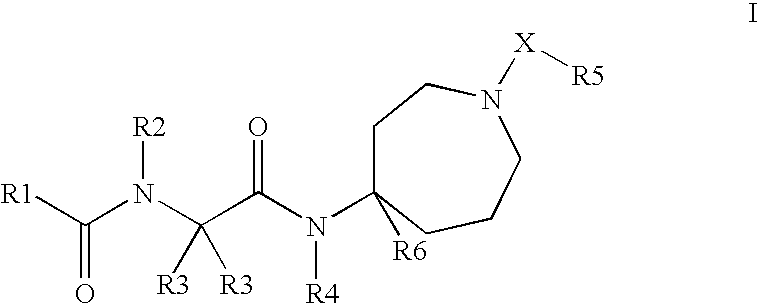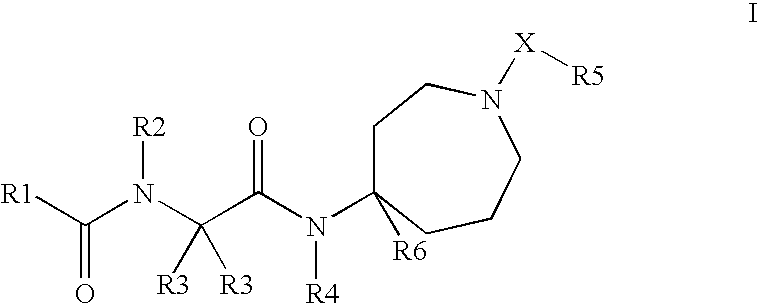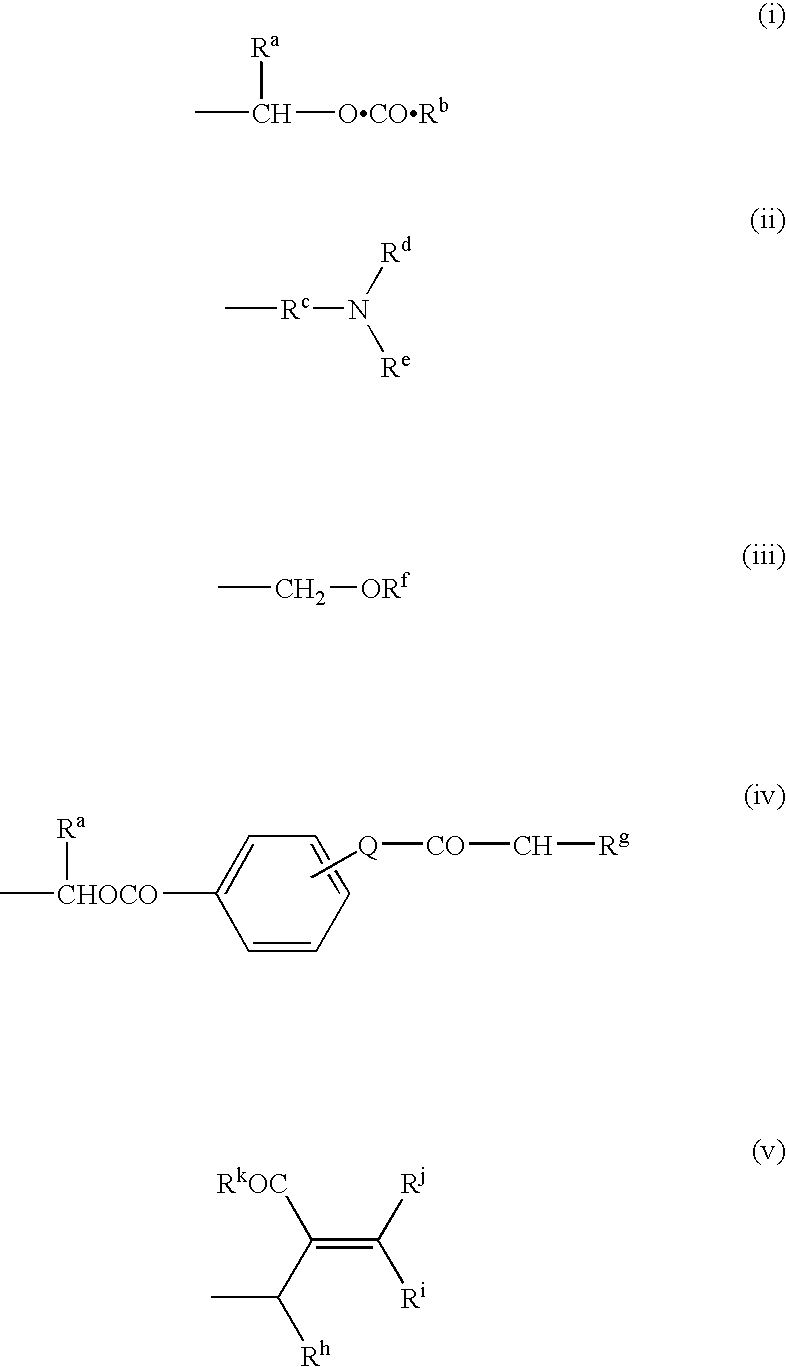Novel Compounds
a technology of compounds and compounds, applied in the field of new compounds, can solve problems such as normal matrix turnover
- Summary
- Abstract
- Description
- Claims
- Application Information
AI Technical Summary
Benefits of technology
Problems solved by technology
Method used
Image
Examples
example 1
Preparation of N-{(1S)-1-[({1-[(2-cyanophenyl)sulfonyl]hexahydro-1H-azepin-4-yl}amino)carbonyl]-3-methylbutyl}-1-benzothiophene-2-carboxamide
[0138]
a) 1-(1,1-dimethylethyl) 4-ethyl 5-oxohexahydro-1H-azepine-1,4-dicarboxylate
[0139] A solution of N—BOC-4-piperidone (15.9 g, 75.0 mmol) in dry ether (150 mL), stirred under dry argon, was cooled to −30° C. A fine precipitate formed. Boron trifluoride etherate (11.3 mL, 90.0 mmol) was added dropwise, keeping the temperature at −30° C. An ether (45 mL) solution of ethyl diazoacetate (9.34 mL, 90.0 mmol) was added dropwise over 15 min, keeping the temp. at −30° C. 10 Minutes after addition was complete, the solution was poured into an ice and saturated sodium carbonate solution (250 mL). The organic phase was separated, dried, and evaporated to give the title product (2) as yellow oil (21.5 g), which was used without further purification: 1H NMR (400 MHz, CDCl3) δ ppm 4.19-4.29 (m, 2H) 3.70-3.81 (m, 2H) 3.39-3.49 (m, 1H) 2.85 (s, 1H) 2.73 ...
example 2
Preparation of 1-Methyl-1H-indole-2-carboxylic acid {(S)-1-[1-(2-cyano-benzenesulfonyl)-azepan-4-ylcarbamoyl]-3-methyl-butyl}-amide
[0148]
a) (S)-4-Methyl-2-{[1-(1-methyl-1H-indol-2-yl)-methanoyl]-amino}-pentanoic acid
[0149] To a CH2Cl2 (120 mL, 0.5 M) solution of 1-methylindole-2-carboxylic acid (10 g, 57.08 mmol) and N-hydroxysuccinimide (7.2 g, 62.79 mmol) was added EDC (13.13 g, 68.5 mmol). After stirring at room temperature overnight, the solvent was removed. The resulting solid was triturated with deionized water and the solid was collected by filtration. The N-hydroxysuccinimide ester was isolated as a tan solid (14.74 g, 95%) and was used in the following step with no further purification: LCMS (M+H): (273). To a suspension of the N-hydroxysuccinimide ester 16 (5.2 g, 18.97 mmol) in 7:3 ethanol / water (0.2 M, 90 mL) was added 10 mL CH2Cl2 and L-leucine (2.59 g, 19.73 mmol). The suspension was allowed to stir at room temperature overnight. The resulting solution was washed wit...
example 3
Preparation of 1-Methyl-1H-indole-2-carboxylic acid {(S)-1-[1-(4-chloro-benzenesulfonyl)-azepan-4-ylcarbamoyl]-3-methyl-butyl}-amide
[0154]
[0155] The title compound was prepared following the general procedure outlined in Example 2d except substituting 4-chlorophenylsulfonyl chloride for 2-cyanobenzenesulfonyl chloride: 1H NMR (400 MHz, CDCl3) (as a mixture of two diastereomers): δ 7.73 (d, J=8.6 Hz, 2H); 7.65 (m, 1H); 7.49 (d, J=8.2 Hz, 2H); 7.42-7.34 (m, 2H); 7.17 (m, 1H); 7.03 (s, 0.5H); 6.99 (s, 0.5H); 6.78 (m, 1H); 6.57 (d, J=7.8 Hz, 0.5H); 6.49 (d, J=8.0 Hz, 0.5H); 4.63 (m, 1H); 4.09-4.03 (m, 4H); 3.56 (m, 2H); 3.12-2.92 (m, 2H); 2.1-1.68 (m, 9H); 1.01 (m, 6H): LCMS (M+H): 559 / 561.
PUM
| Property | Measurement | Unit |
|---|---|---|
| Mass | aaaaa | aaaaa |
| Mass | aaaaa | aaaaa |
| Mass | aaaaa | aaaaa |
Abstract
Description
Claims
Application Information
 Login to View More
Login to View More - R&D
- Intellectual Property
- Life Sciences
- Materials
- Tech Scout
- Unparalleled Data Quality
- Higher Quality Content
- 60% Fewer Hallucinations
Browse by: Latest US Patents, China's latest patents, Technical Efficacy Thesaurus, Application Domain, Technology Topic, Popular Technical Reports.
© 2025 PatSnap. All rights reserved.Legal|Privacy policy|Modern Slavery Act Transparency Statement|Sitemap|About US| Contact US: help@patsnap.com



